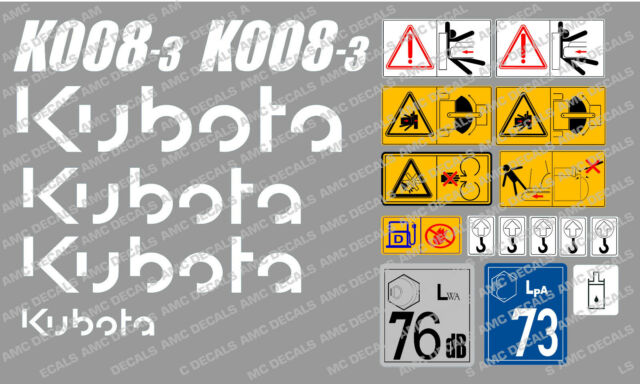This article explains the common komatsu Excavator warning light symbols; including the Malfunction Indicator Light (MIL), that illuminate on the dash panel of a komatsu mini excavator machine.
Coolant Temperature komatsu Excavator Warning
If the coolant temperature warning light comes on in your dashboard, pull over and turn off the engine as soon as it is safe to do so. Wait for the engine to cool before checking the coolant level, topping up if necessary. If you continue to drive with this light illuminated, you risk serious damage to your engine.
If you have an older car, or a car with a high mileage, it’s possible that a sensor has failed or that there is insufficient coolant in the system. In either case, you should seek professional automotive help as soon as possible.
In newer vehicles this light may come on because of a faulty sensor or electrical component in the cooling system, or because of insufficient or contaminated coolant. In any case, it’s best to have your vehicle checked out by an expert who will be able to diagnose and fix the problem.

Fuel Level komatsu Excavator Warning
The fuel level warning light is a red light that is located above the instrument panel. The purpose of the fuel level warning light is to alert the operator when low fuel levels are detected in the tank. When the operator starts up the excavator, he will see this light come on and flicker for a few seconds while the system self-checks. This is normal. If the engine is shut down and restarted, you should see this light flash again during self-check.
When there is little or no fuel in the tank, this warning light will remain lit until there is enough fuel to turn it off. The only way to reset this warning light after adding fuel to your tank is if you shut off and restart your engine.
Transmission Filter Clogging komatsu Excavator Warning
Last month I was working on a komatsu excavator for a customer and noticed that the transmission oil filter was clogging. The transmission also felt like it was slipping and would rev up before moving. I replaced the transmission filter and fluid, but the excavator continued to have problems. I then called my local dealer and asked if there had been any issues with transmissions in the past. He said that there had been some problems where the transmission filter would clog, causing the transmission to slip and have problems moving.
He told me to check for restriction in air flow through the radiator and transmission oil cooler. Since this model of komatsu excavator did not have a standard radiator, I put an infrared thermometer on the front of the machine while it was running. I found that one side of the radiator was hot while the other side was cool. When I blew air through one side of the radiator, it came right out of the other side with no pressure at all. I removed the front indicator panel to gain access to in front of the radiator (shown below).
Adjuster Overload komatsu Excavator Warning
The komatsu KX91-3 excavator has a control system that will not allow the operator to use the quick hitch or auxiliary hydraulic functions if the machine is overloaded.
If you try to use the quick hitch or aux function when the machine is overloaded, it will put a warning on the display. The message, “Adjuster overload” will appear on screen. In order to clear this warning, you will need to reduce your work load and get back within your limits.
You can find more information in your komatsu user manual, section 5-3-3.
Oil Pressure komatsu Excavator Warning
A komatsu excavator will give a warning light if the oil pressure is lower than it should be. There are a few possible causes for this. First, check the oil level and make sure that it has not dropped below the minimum mark on the dipstick. If it has, refill it with engine oil to the appropriate level. If the oil level is fine, then you may have an issue with the oil pump or there may be an obstruction in the filter. If this is the case, take your excavator to an authorized komatsu dealer to fix these problems.
Hydraulic Oil Temperature komatsu Excavator Warning
Hydraulic Oil Temperature komatsu Excavator Warning Hydraulic fluid is a mineral-based liquid used in heavy-duty applications to move power smoothly and efficiently. The oil creates a separating film that lubricates moving parts to reduce friction, heat, and wear. Hydraulic systems operate under high pressures and can cause serious injury if they are not properly handled.
The hydraulic fluid’s condition is critical to the operation of the system. It must be clean, free of moisture, and have sufficient levels of additives for proper system operation. If your excavators or wheel loaders are overheating and you believe your cooling system is not up to standard, check the following list before you start making repairs:
1) Inspect all hoses for wear and leaks;
2) Check the condition of all rubber components, including seals;
3) Inspect all connections for leaks;
4) Inspect all fittings for cracks or damage;
5) Test the cooling fans for proper operation;
6) Test the hydraulic pump capacity;
7) Test pump pressure drops off in low pressure situations;
8) Check hydraulic pump efficiency operating temperature.
Hydraulic Oil Filter Clogging komatsu Excavator Warning
I’m excited to announce the release of a new hydraulic oil filter clogging warning system for excavators. The hydraulic oil filters are only rated for about 10 microns, and komatsu recommends that you change them every 200 operating hours. But how many of us actually do? Not many I suspect.
This warning system will detect clogging in your hydraulic oil filters, and alert you with an alarm and a dashboard indicator. It also monitors your fuel tank level, so if your fuel runs out or leaks when you’re not there, it will send you an SMS alert.
The warning system is based on a Raspberry Pi, using an Arduino shield to monitor the 12V inputs from the equipment. It’s designed to be installed inside the machine caoacabinet so all of the sensors are connected directly to the Pi via short wires.
